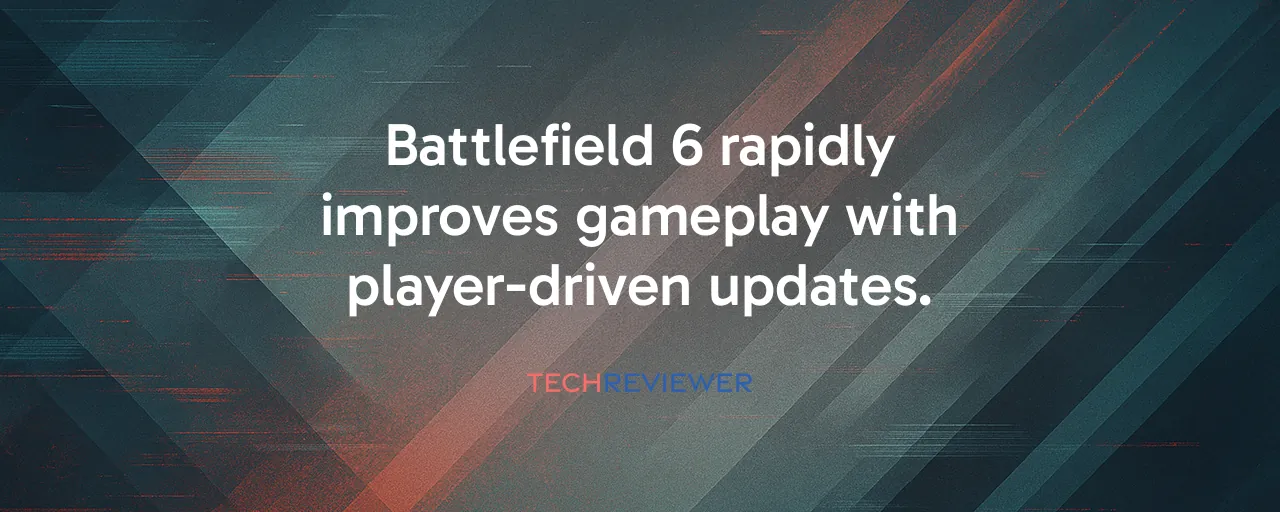A Game That Listens
When Battlefield 6 hit shelves on October 10, 2025, it sold over 7 million copies in five days, shattering EA's Steam record with 747,000 concurrent players. The launch was a triumph, but players quickly spotted cracks: blinding outdoor lights, grind-heavy challenges, and weapons that felt off. DICE didn't sit idle. Their Season 1 patch, rolling out October 28, tackles these pain points head-on, showing a commitment to players that feels rare in today's live-service world.
What stands out is how fast DICE moved. After complaints about tasks like nailing 150 headshots at 200 meters with a sniper rifle, they slashed requirements down to just 5 in some cases. This responsiveness, paired with Battlefield Labs' testing program, signals a shift toward building trust through action, not just promises.
Smoother Sights, Sharper Shots
Visibility issues plagued early matches. Stepping from a dark building into bright sunlight could leave players squinting, unable to spot enemies. The Season 1 patch adjusts exposure and brightness, making outdoor transitions less jarring and indoor shadows less murky. Zooming in with weapon optics also gets a clarity boost, a small tweak that competitive players, especially those streaming on Twitch, will notice instantly.
Weapon dispersion fixes are just as critical. Early on, firing right after sprinting or making tiny movements threw off accuracy, especially for controller users. DICE's update ensures weapons behave as intended, rewarding burst-firing precision while keeping each gun's range distinct. These changes make every firefight feel fairer and more satisfying.
Learning From Past Mistakes
Battlefield 2042's 2021 launch offers a stark lesson. Its buggy maps, odd specialist system, and thin content left players frustrated, with player counts tanking fast. DICE learned hard truths: polish matters, and testing can't be rushed. Battlefield 6's robust launch, backed by Battlefield Labs' community testing, avoided those pitfalls. The result is a game that feels like classic Battlefield, big and chaotic yet precise, while still evolving.
Halo Infinite's grindy progression system in 2021 echoes another warning. Its slow unlocks sparked backlash, and while 343 Industries patched things up, the damage lingered. Battlefield 6 sidesteps this by quickly cutting challenge demands after launch feedback, like reducing repair tasks from 6,000 to 1,000 points. These fixes show DICE prioritizes fun over forcing players to slog through tasks.
Battle Royale's Big Bet
The Battle Royale mode, refined through Battlefield Labs, tweaks time-to-kill for better close-range duels and gives every player one armor plate at the start with the capacity to upgrade to two. These changes reward smart positioning while keeping fights dynamic. Unlike Warzone's all-or-nothing pace, Battlefield's take blends squad tactics and vehicle chaos, staying true to its DNA. Content creators like NICKMERCS are already hyping its potential to shake up the genre.
That said, balance is tricky. Helicopters and vehicles got tweaks to avoid dominating late-game circles, but some players worry they're still too strong. DICE's plan to monitor feedback post-launch suggests they're ready to adjust, keeping the mode fresh without losing its edge.
Building a Lasting Legacy
Battlefield 6's live-service model thrives on constant updates. Season 1's new maps, like Blackwell Fields, and modes like Strikepoint add variety, while weapons like the SOR-300SC carbine expand options. With over 172 million matches played at launch, players are hooked, but keeping them engaged means delivering steady content without bugs like the vehicle spawn glitches that tilted Breakthrough mode's balance.
EA's challenge is clear: sustain this momentum. The game's $350 million in launch revenue and PC-heavy sales (56.7% on Steam) show a hungry audience. By listening to players, fixing technical hiccups, and learning from flops like 2042, DICE can make Battlefield 6 a shooter that doesn't just launch strong but stays iconic for years.
